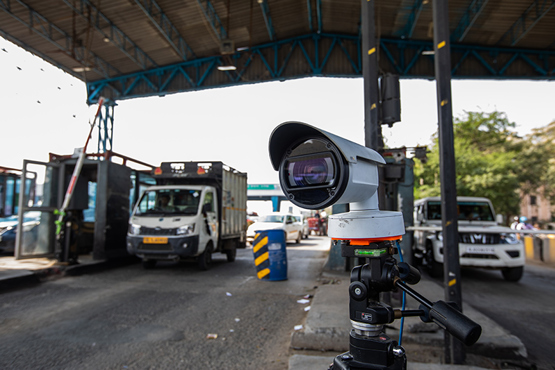Target the oldest diesel trucks to reduce racial disparities in air pollution exposure in NYC

A new TRUE study of real-world vehicle emissions in New York City has two key findings in relation to truck emissions in NYC: First, less than 10% of diesel trucks on the road are responsible for more than two-thirds of the fleet's tailpipe PM2.5 emissions; and second, people of colour living in the city are exposed to more PM2.5 from diesel trucks than average while non-Latino white residents are exposed to less.

The study modelled diesel truck emissions using New York City traffic activity data and 70,000 heavy-duty vehicle real-world emissions measurements from the TRUE U.S. database and applied social analysis to assess racial disparities in relation to exposure, with ‘people of colour’ referring to Latino people of any race and non- Latino, non-white people. Fine particulate matter (PM2.5) and nitrogen oxides (NOx) emissions and their associated health impacts were analysed at a fine spatial resolution. The report finds:
- Major freight corridors in the Bronx and Queens have the highest levels of ambient PM5 from diesel trucks.
- People of colour living in the city are exposed to 17% more PM5 from diesel trucks than non-Latino white residents;
- The oldest diesel trucks, manufactured before 2007, make up a small proportion of the fleet (6%–10%) but are responsible for approximately two thirds (64%–83%) of all diesel truck tailpipe PM5 emissions.
- Changing from a pre-2010 to a contemporary diesel truck model can reduce negative health impacts by between 81% to 96%.
- Even new diesel trucks have non-negligible negative health impacts. An accelerated transition to zero-emission alternatives is essential to ensure a continued decline in diesel truck emissions and to meet climate goals.

Diesel trucks are a major source of PM2.5 and NOx emissions, which have adverse health impacts; it is estimated 2,000 New Yorkers die prematurely each year as a result of PM2.5 exposure alone. Emissions limits for trucks do not reflect the operating conditions in urban spaces, where low speeds and idling result in excess vehicle emissions - previous ICCT studies show travelling below 25 mph results in truck NOx emissions five times higher than regulatory limits. Heavy-duty diesel vehicles make up 6% of New York City vehicle activity but contribute 51% and 52% of NOx and PM2.5 tailpipe emissions respectively, and freight volumes in the city are projected to increase by more than two thirds by 2045.
The environmental justice issue of inequitable exposure to air pollution from diesel trucks has been well documented. This work adds to this evidence base by assessing the real-world emissions and health impacts of the present-day fleet and by investigating the impact of specific engine model year groups.
The report makes several key recommendations to address the current inequitable health burdens of diesel truck emissions.
- To address the racial disparities in exposure to ambient PM5, which is particularly concentrated along cargo corridors, access to ports and other industrial areas should be limited to trucks with engine model years of 2010 or later.
- In addition, more rigorous inspection and maintenance of the fleet is needed to identify and take action on individual high emitting vehicles.
- Finally, a shift to a cleaner, more sustainable freight network must include a commitment to accelerate the transition to zero-emission alternatives by implementing ambitious zero-emission timelines, rebates, and infrastructural support.
Sheila Watson, Deputy Director of the FIA Foundation, said: “In New York the impact of diesel trucks on air quality and health is very clear, and this report sets the steps needed to address that and deliver real health benefits. However, the urban health burden of dirty air is not borne equally, and this important new analysis also shows that environmental justice has to be a key part of cities’ policy-making process. This is an urgent issue, particularly as freight traffic in the city will continue to grow.”

Tim Dallmann, Program Lead at the ICCT, said: "The findings of this report are of relevance to everyone looking to address the impacts of heavy-duty trucks on air quality and their disproportionate impact on the health of some people in our cities. We hope additional cities will take advantage of real-world data to better understand how their fleets are contributing to harmful pollution and to craft effective policies."



